It’s no secret that some astrophotography targets are easier to image (and find!) than others. Here I am going to break down my 5 favourite deep sky astrophotography targets for beginners, how to find them and share my images along the way.
All of these targets are well suited to camera lenses, but some will really pop when using a telescope. Some of these targets are visible to the naked eye, but a couple will require a basic level of star hopping. As long as you can find the nearest bright star to the target, you shouldn’t have a problem locating any of them.
The Orion Nebula (M42)
Probably the most recognisable deep sky object out there. The one we all turn to first to image. The great thing about the Orion Nebula is that not only is it a beautiful target to image, it’s probably the easiest deep sky object to find because it’s visible to the naked eye just below Orion’s Belt. Below I include 2 images.
The first image was taken with my 3inch refractor telescope with a focal length of 420mm. The second image was taken with a 50mm lens and is a widefield shot of the Orion constellation. As you can see in the wide field annotated shot, there’s actually 5 deep sky objects in one FOV! So that’s 5 for the price of 1!


Andromeda Galaxy (M31)
Our galactic neighbour! Did you know our own Milky Way galaxy is due to collide with the Andromeda Galaxy in 2.5 billion years? I wish I could stick around to see that! I digress.
Andromeda is also visible to the naked eye under the right conditions and so can be easy to find. It’s also very close to the bright star Mirach. If you can find Mirach, you can find the Andromeda Galaxy. It’s also HUGE and will take up a large part of your FOV. Below is a shot I took that was featured in the BBC Sky at Night magazine in 2020.
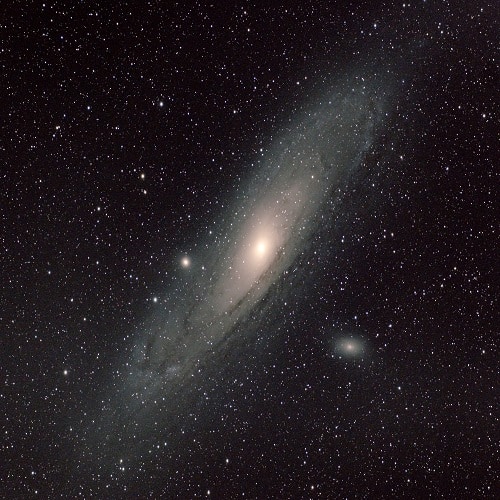
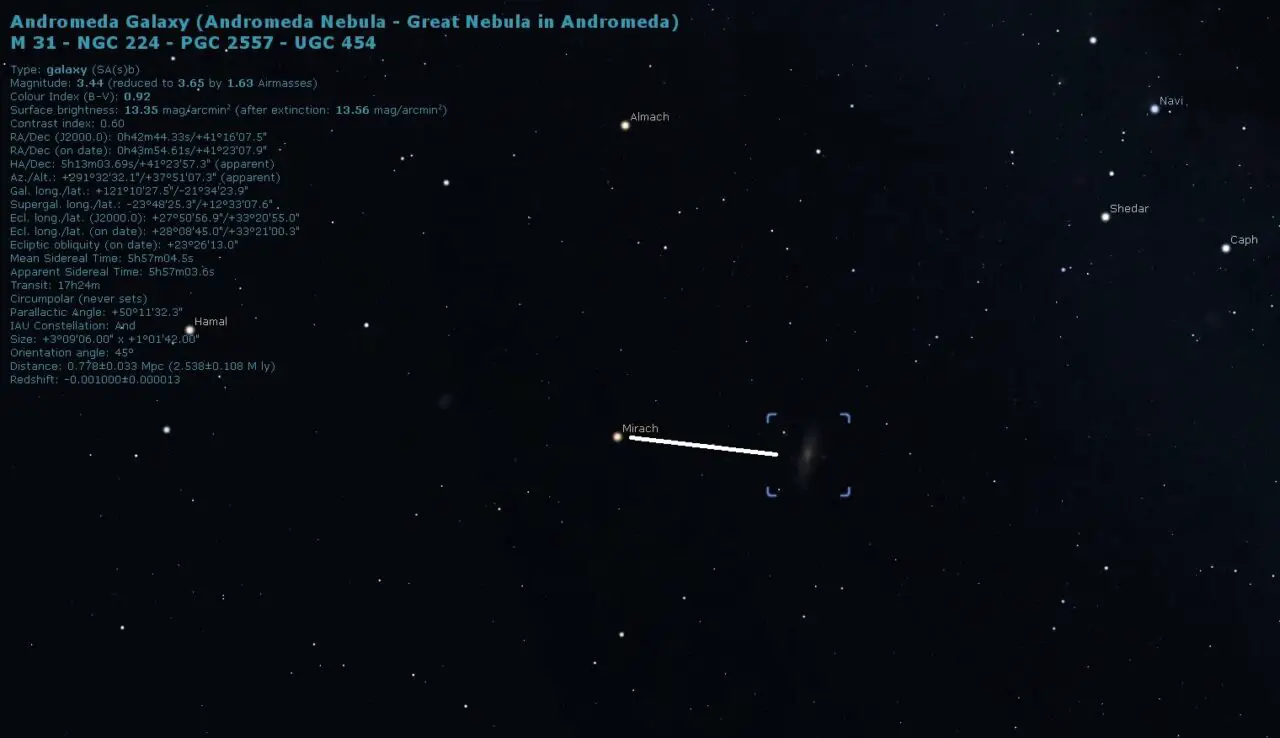
The Pleiades (Seven Sisters, M45)
Also visible to the naked eye (are you seeing the pattern yet?). This open star cluster also has beautiful reflection nebulae around the brightest stars, which is thought to be material left over from their formation. Finding The Pleiades is really quite simple, especially in dark skies.
Locate the constellation Taurus and look a collection of stars that looks like a really tiny Little Dipper – that’s The Pleiades! You can also use the bright star Aldebaran in the constellation to locate it.
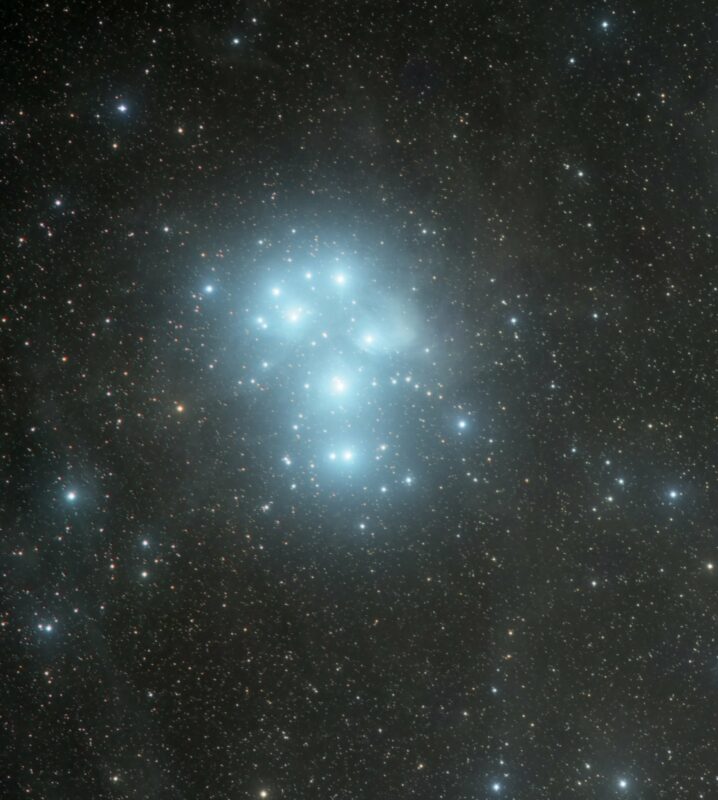
California Nebula (NGC2244)
Located not too far from The Pleiades, with a 50mm lens you can actually get the California Nebula and The Pleiades in the same FOV, check out my shot below! Named for looking like the state of California, this emission nebula in the constellation Perseus is HUGE and so makes for a great target regardless of focal length.
The image below was taken with a 3 inch refractor and crop sensor DSLR. Finding this nebulae isn’t too difficult if you already know where The Pleiades is. If you draw a triangle from the bright stars Capella and Mirfak to the Pleiades then the California nebula is basically right in the middle of the 3 (see below).
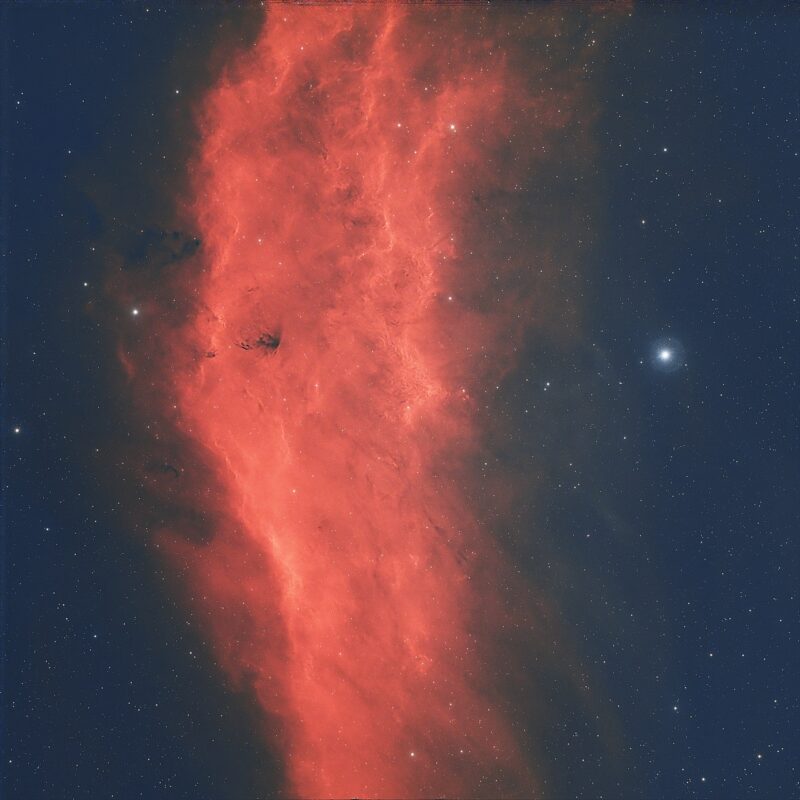


North America Nebula (NGC7000)
Another HUGE emission nebula that has a resemblance to America, this time the whole of North America, with the right focal length you can also capture the neighbouring Pelican Nebula too! This DSO is imaged during the summer and is a whopping 2500 light years across.
The North America Nebula is easy to find thanks to the bright star Deneb being right next to it. If you can locate Deneb in the constellation of Cygnus, then chances are some part of the North America nebula will fall into your FOV when taking your test shots.
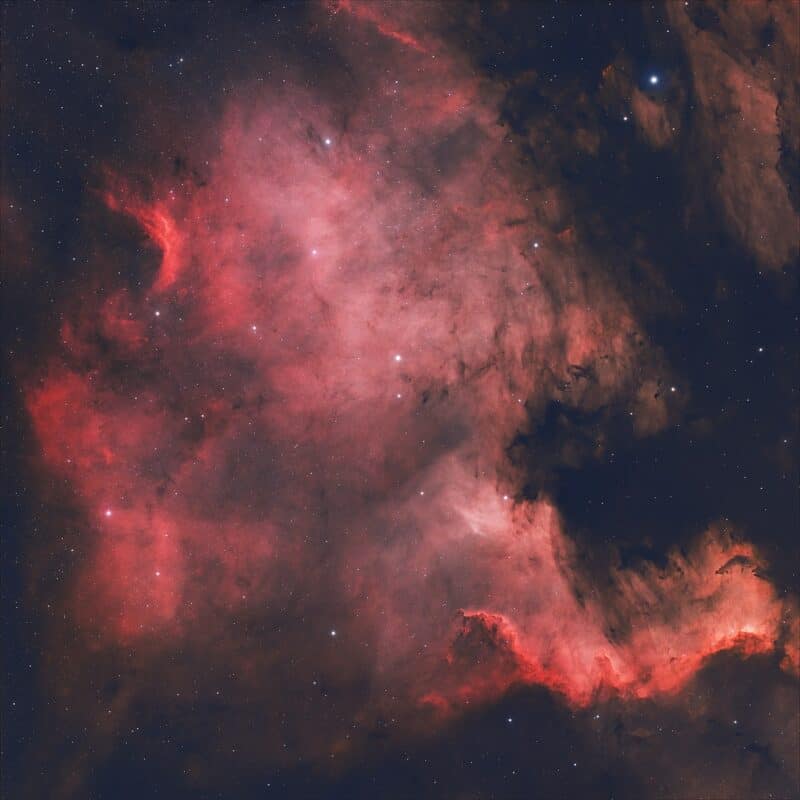
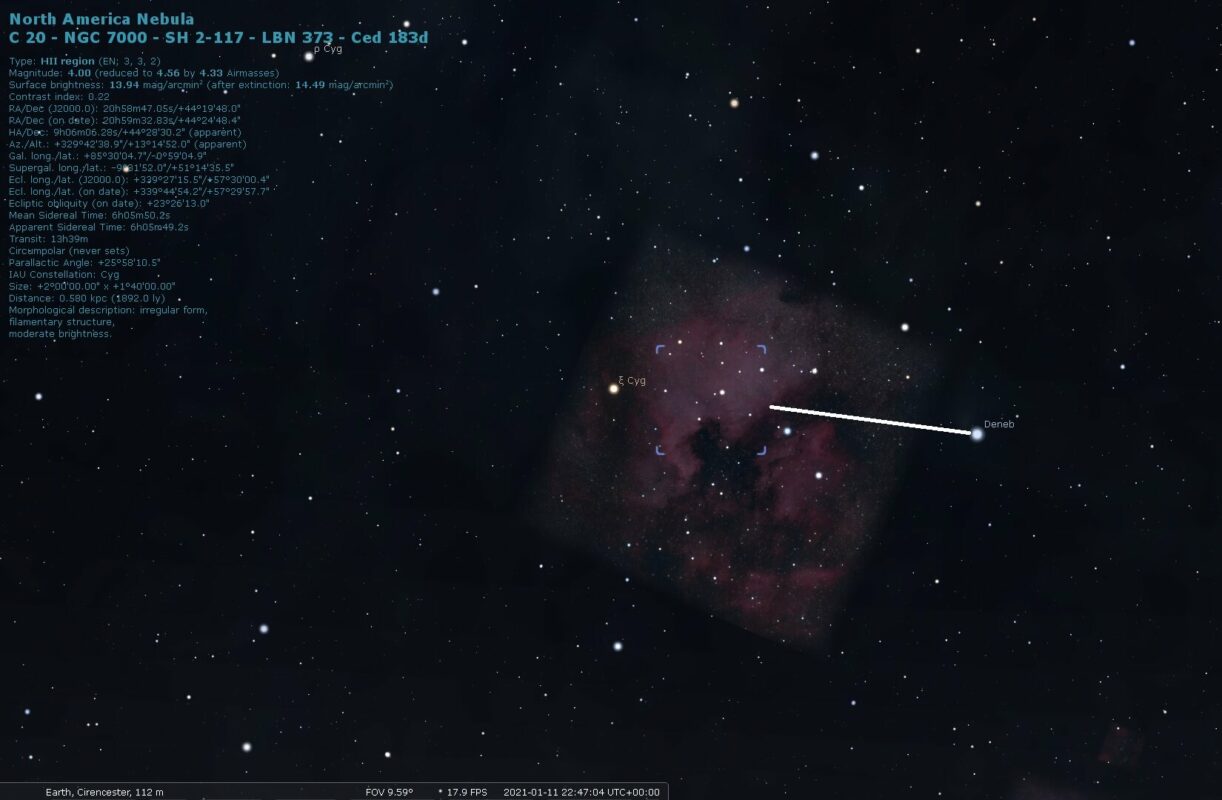
I hope this guide proves useful for beginners looking for some easy targets to image, regardless of your equipment. Don’t forget to tag me in your social media images, I love seeing what everyone is up to!


Hi,
was the 50mm orion image, the californian image and the North American nebula taken with a modified camera?